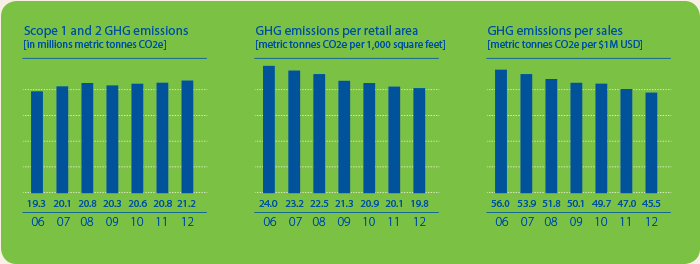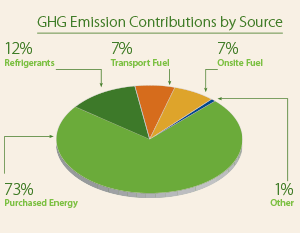Environment
Decoupling business growth from environmental impact
Walmart is known for being highly efficient with resources – and that holds true when it comes to reducing greenhouse gas (GHG) emissions. For seven consecutive years, we’ve reduced our Scope 1 and 2 carbon intensity, and we’re on track to hold our absolute emissions flat over this decade, despite our continued growth. These achievements in climate stewardship are a testament to the collective actions our associates take to operate more efficiently, and more sustainably, worldwide.

Manage what you measure
Walmart tracks its Scope 1 (direct), Scope 2 (indirect) and some Scope 3 (other indirect) GHG emissions according to the World Resource Institute’s GHG Protocol. Since 2005, we’ve publicly reported this information annually to CDP (formerly Carbon Disclosure Project). We most recently received a performance score of A- and a transparency score of 94.
Scope 1 emissions:
On-site fuel combustion, mobile fuel combustion from leased and owned vehicles, livestock waste emissions from poultry farms and refrigerants
Scope 2 emissions:
Purchased electricity and purchased hot or cold water
Scope 3 emissions:
Corporate business air
travel, operational waste
and leased facilities

We’ve limited our emissions growth to only one-quarter (12 percent) of our business growth (in terms of sales (51 percent) and square footage (45 percent) over the same time period from 2005–2013.
Whether it’s our relentless pursuit of renewable power, our focused attention on the energy and fuel efficiency in our massive fleet of facilities and trucks, the recent improvements in the way we manage refrigerants or even the successful diversion of operational waste from landfills, Walmart is proof that businesses can prosper while reducing emissions.
